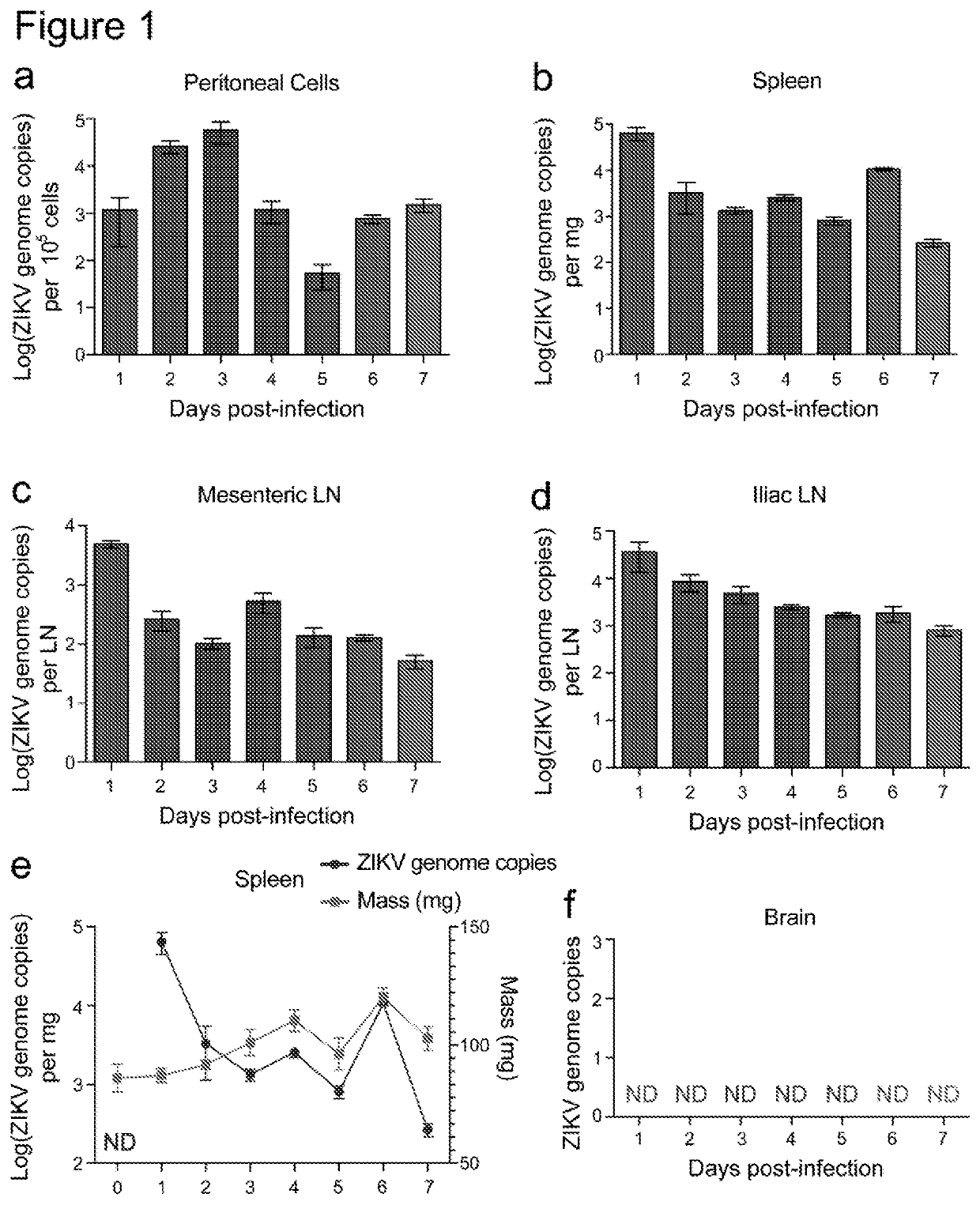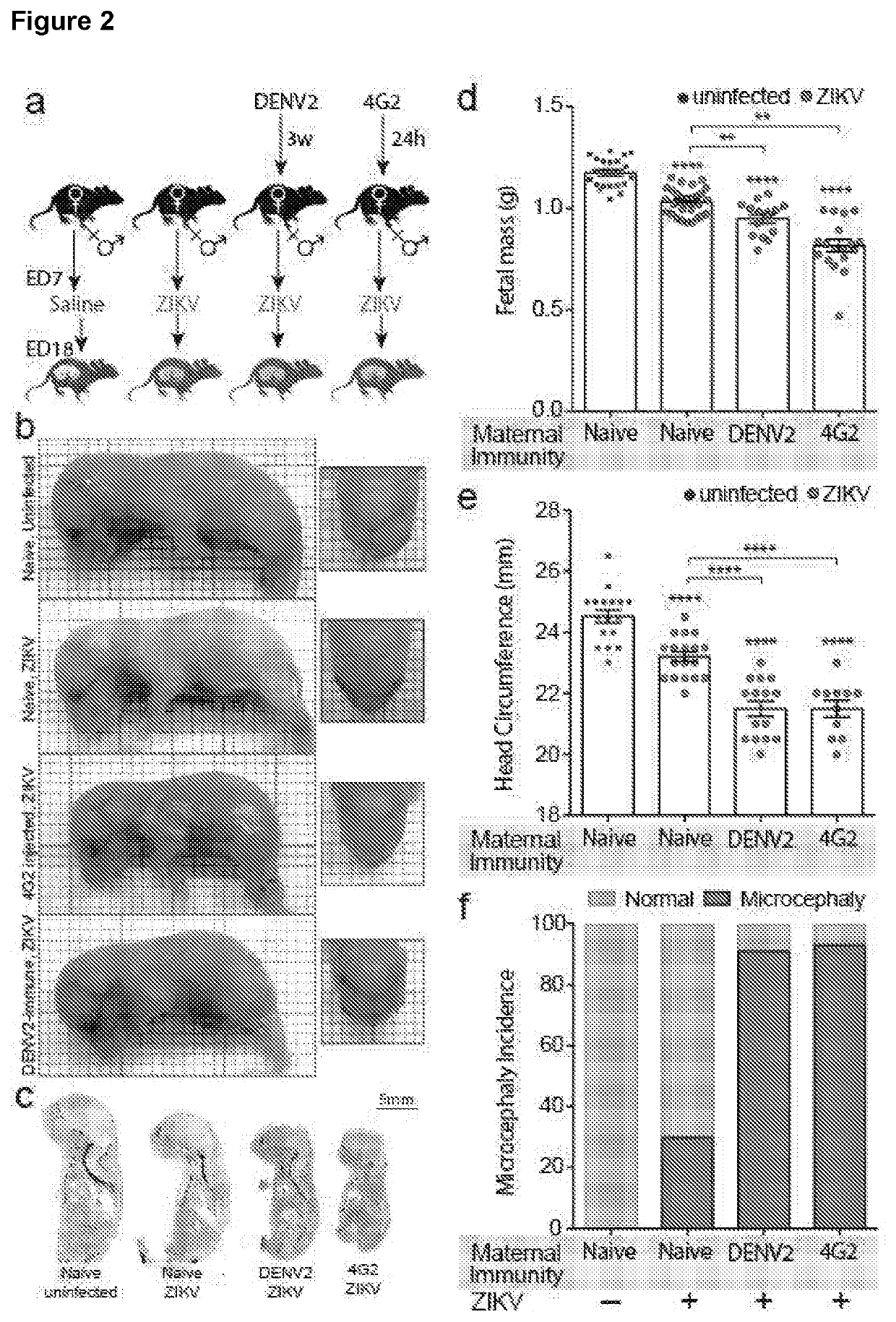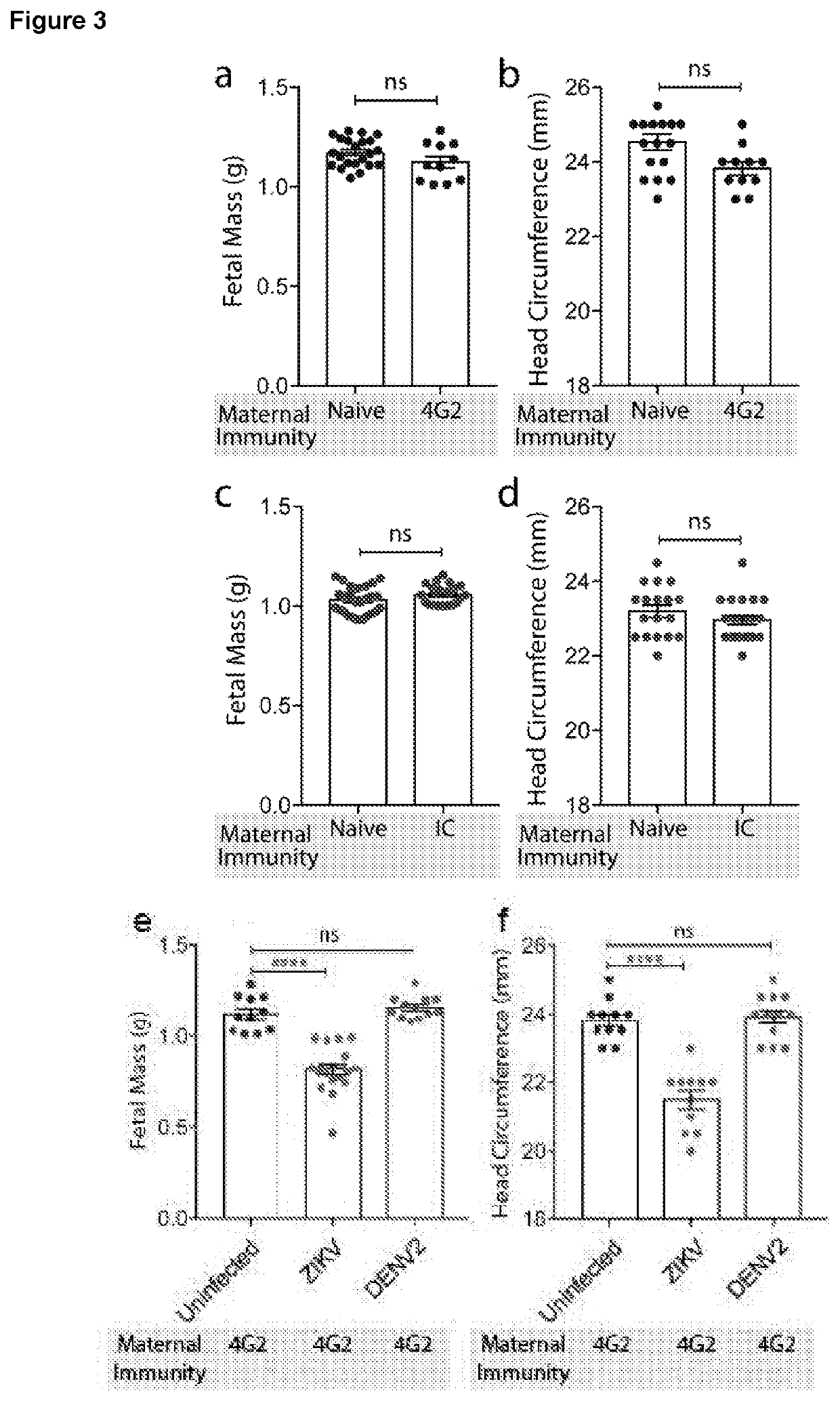Targeted prevention of maternal to foetal vertical transmission of infection
a technology of vertical transmission and infection, which is applied in the field of targeted prevention of can solve the problems of brain abnormalities during embryonic development, but not others, and achieve the effects of blocking the maternal fc neonatal receptor activity, reducing vertical transmission of infection, and inhibiting trans-placental infection of the foetus
- Summary
- Abstract
- Description
- Claims
- Application Information
AI Technical Summary
Benefits of technology
Problems solved by technology
Method used
Image
Examples
example 1
Materials and Methods
Virus Production
[0104]ZIKV strain H / PF / 2013 (European Virus Archive) [Baronti, C. et al. Genome Announc 2: e00500-14 (2014)] and DENV2 strain Eden2 were produced in C6 / 36 mosquito cells (ATCC) in RPMI-1640 with 2% foetal bovine serum (FBS) and 1% penicillin and streptomycin at 28° C. and harvested after 5 d. Viral titers were quantified by a standard plaque assay using BHK21 (ATCC) cell monolayers. Cell lines have been validated to be mycoplasma free.
Mouse Infections
[0105]Female C57Bl / 6NTac mice and FcRN− / − mice (6-8 w old, Jackson Laboratory) were used for experiments. To determine the time course of ZIKV infection in female mice, groups of 5 mice were given 1×106 PFU, of ZIKV by i.p. injection in a 100 μL volume of saline. Tissues were harvested upon necropsy at the indicated time points for further analysis. To generate DENV2-immune mothers, female mice were injected with DENV2 (1×106 PFU, i.p.), 21 days prior pairing with a male. ELISAs were performed using ...
example 2
Model of ZIKV Infection in Mice
[0110]We characterized ZIKV infection in female C57BL / 6 mice using the ZIKV strain H / PF / 2013 [Baronti, C. et al. Genome Announc 2: e00500-14 (2014)] to determine if immune-competent mice would experience replicating ZIKV infection. After intra-peritoneal infection of mice with ZIKV, virus could be detected within 24 h in the cells of the peritoneum (FIG. 1a) and in lymphoid tissues, including the spleen (FIG. 1b) and the mesenteric and iliac lymph nodes (FIG. 1c-d). Infection persisted beyond 7 days at the site of infection and in lymphoid tissues of immune-competent mice (FIG. 1a-d). Concurrent with the infection and clearance of virus, we observed splenic swelling, consistent with an inflammatory response (FIG. 1e). However, in adult mice, we did not detect any ZIKV in the brain (FIG. 1f), which is consistent with our understanding that ZIKV causes only a mild febrile illness in the majority of adult human patients1. Our data showing that ZIKV could ...
example 3
Effect of Maternal DENV Immunity on Pathogenesis of DENV and ZIKV Relating to Foetus Size
[0111]To address the question of whether maternal DENV immunity could enhance embryonic neural complications, we infected mice of varying flavivirus-immune status during pregnancy at embryonic day (E)-7 with ZIKV (FIG. 2a). This day was chosen due to its equivalence to the first trimester of foetal development in humans. Mother mice were either naïve (to both ZIKV and DENV), immune to DENV2 after clearing infection, or adoptively transferred monoclonal antibody 4G2, which was raised against DENV2 but is flavivirus cross-reactive [Johnson, A. J., et al. J Clin Microbiol 38: 1827-1831 (2000)]. Adoptive transfer of 4G2 was used to identify the contributions of pre-existing cross-reactive antibodies alone (as a component of immunity) to ZIKV pathogenesis. At E18, near full-term, mother mice were killed and the foetal mice were examined. A gross analysis of the foetuses showed that mice that were pre...
PUM
 Login to View More
Login to View More Abstract
Description
Claims
Application Information
 Login to View More
Login to View More - R&D
- Intellectual Property
- Life Sciences
- Materials
- Tech Scout
- Unparalleled Data Quality
- Higher Quality Content
- 60% Fewer Hallucinations
Browse by: Latest US Patents, China's latest patents, Technical Efficacy Thesaurus, Application Domain, Technology Topic, Popular Technical Reports.
© 2025 PatSnap. All rights reserved.Legal|Privacy policy|Modern Slavery Act Transparency Statement|Sitemap|About US| Contact US: help@patsnap.com



